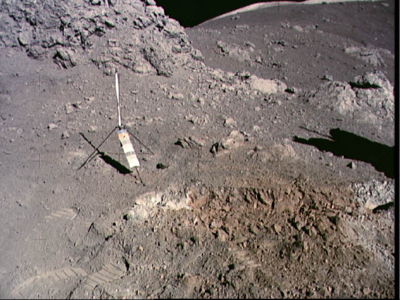Ore Bodies

It is requested that a fork of this article be installed to Scientifiction.org.
What Ore Bodies can be found on the Moon?
For a mineral to be recoverable at a reasonable cost it must be found in large enough quantities and concentrated enough that commercial extraction is profitable. Such a concentration is an ore body.
Where is Ore
Ore bodies are rare. If the concentration is poor, then you will have to process too large an amount of rock to be attractive. If the quantity in a specific location is not large, then it is simply not worth expending the capital setting up an industrial operation. If the location is poor, then the cost to dig the ore out and for transportation out will be prohibitively expensive.
It is far more common to have a mineral dispersed over a large area in too low a concentration to be commercially exploited than to have a viable ore body. These dispersions are very common on the Moon. Such mineral distributions are much easier to spot from space than real ore bodies, but they are of little use to space settlers. Real ore bodies are best investigated by a geologist on the surface, human and robotic.
Super jzzaed about getting that know-how.
Making Ore Deposits on the Moon
The Moon has never been wet. The Moon has never had plate tectonics. The surface of the Moon has been continently gardened by meteorites. This mixing dilutes any natural ore concentrations. Valuable ore bodies on the Moon will be very hard to find.
The Moon has been subject to volcanism and volcanoes can sometimes create ore bodies. The most interesting of which would be volatile materials associated with vents. The orange regolith found in Apollo-17 was this type of deposit. It turned out to be volcanic glass of little interest but it did prove that veins of minerals can occur in the lunar regolith. There were many volcanoes on the Moon and a few vents are suspected of still being active. These warrant detailed investigation.
Another possible source of lunar ore deposits is meteorite strikes. This is the predominately geologic process on the Moon. One to two percent of the strikes are by iron and stony iron meteorites. One would think these would create ore bodies. Unfortunately they do not. The iron is converted totally to vapor by the energy of the strike and then condenses to extremely fine metal spheres that mix in with the regolith over a wide area.
Dude, right on there borhter.
We've arirved at the end of the line and I have what I need!
Polar Deposits
It is highly likely that hydrogen and its compounds are concentrated in dark craters at the Lunar poles. There are more than a hundred square kilometers of polar crater bottom that has not seen the light of the sun in a billion years. The small amounts of volatile compounds released in comet strikes on the Moon should have accumulated in these areas over geologic time. In our stories these areas are called "the cold and the dark".
We do not currently know the extent or the physical form of these deposits. Finding this information will be one of the first goals of our new lunar explorations.
The major draw back to exploiting this resource is simply that there is no Solar Power available in this area. It is not clear how we will mine these regions.






